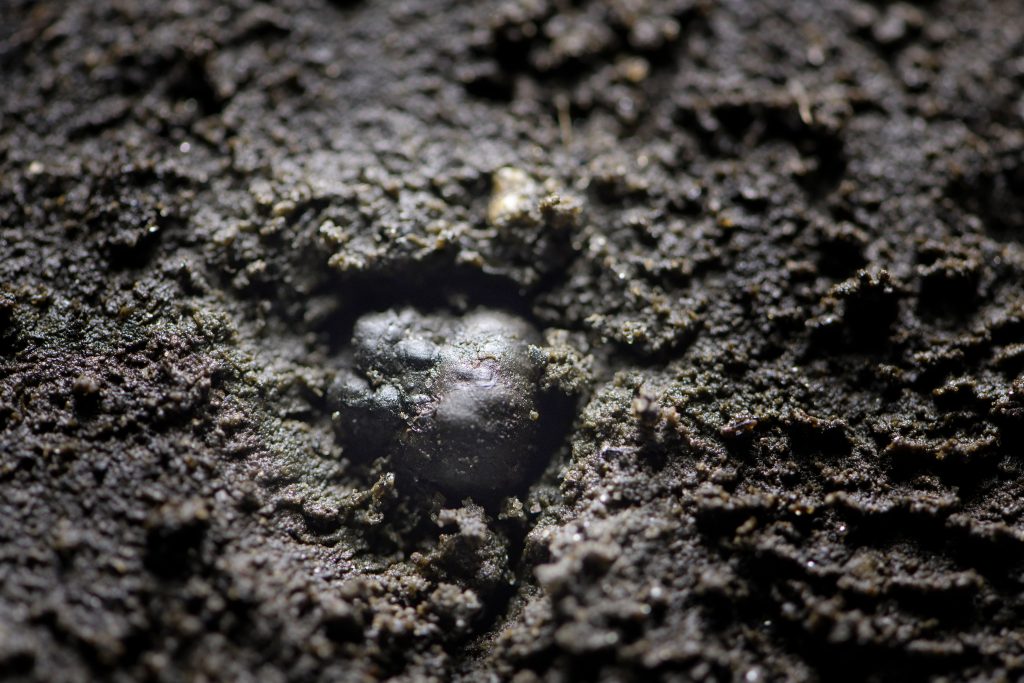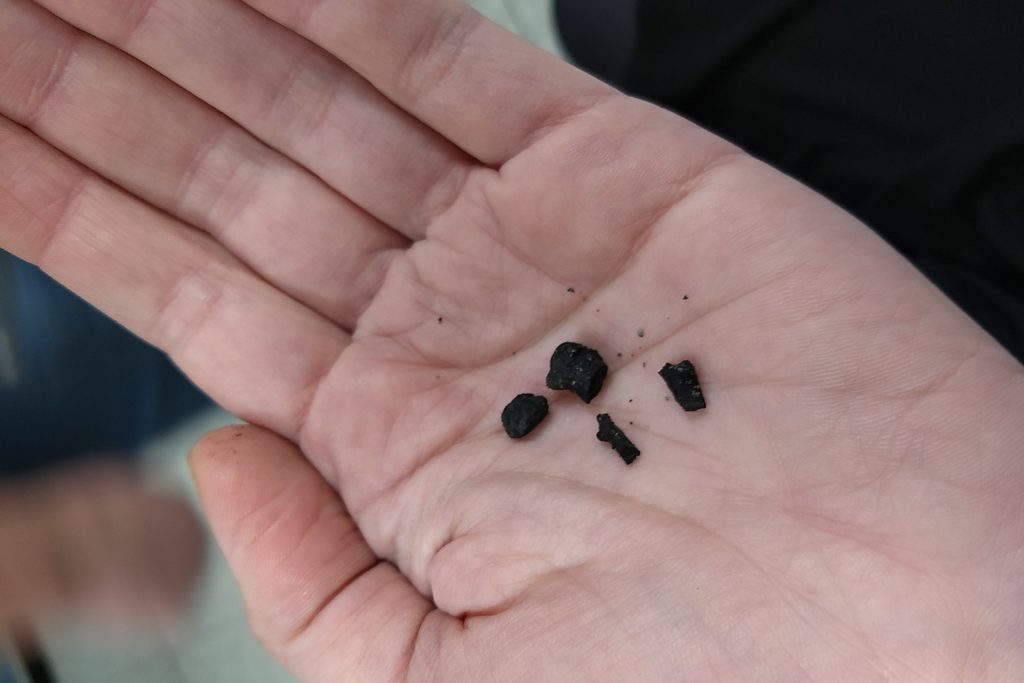It’s hard to imagine the iconic Horsebarn Hill looking anything other than the way it does today. But on a cold, windy, and wet day in November, a professor and his students are in a race against the weather to take samples that will offer clues to the landmark’s past before it starts raining on this day, and before freezing weather sets in for the winter.
[Coring] is essentially a way to understand earth history. … With a core, we are actually acquiring a sedimentary archive. — Will Ouimet
This is part of an exercise led by Will Ouimet, associate professor in the Center for Integrative Geosciences, to teach students how to take soil and sediment cores. These cores will also serve as learning tools in Ouimet’s undergraduate geology lab course in which the students will learn how to read the history of geologic layers held in a core sample, in this case at a location that tells the story of the area thousands of years before the University was established.
The sampling process can be tricky. It requires both brute force and some finesse. Mucking around in a cold marsh at the foot of the hill, and lugging two 20-foot poles, a concrete vibration device, and a generator, the geologists carefully choose the site.
In principle, it’s straightforward. Take the metal tube, attach the vibration device to the core tube, then muscle the tube into the ground.
But anyone who has ever had to dig into New England soil will recognize that it’s no easy feat. Having the vibration device attached to the metal tube helps the core tube navigate through silt, sand, and gravel, and cut through branches and other organic debris that might otherwise impede the sampling. Once the tube is sufficiently driven into the earth, the team caps it to create a vacuum that will hold the sample within the core tube.
Next, Ouimet secures a rope around the core tube, then ties the rope to a car jack and begins to crank the core slowly back to the surface. This part, he explains, can be touch and go, because the sample can quickly slip free of the tube if they’re not careful.
After several laborious hours, Ouimet shouts “It’s out! It’s out!”
Back in the lab, the cores are propped up to allow excess moisture to drain away.
As the researchers gather around the table, there is a definite air of excitement as they prepare to open the cores. Using electric tin snips, Ouimet starts splitting the core on one side, then the other. The students hold the halves together, as he splits the core in half with a blade, slicing through the sediment and organic matter in order to separate the halves cleanly.
The big moment arrives. “This is it!”

As the core is slowly opened, the smell of the swamp fills the room, as molecules of carbon dioxide, hydrogen sulfide, and methane are released from the decaying vegetation that has been trapped underground for thousands of years. The organic materials also begin to change color the moment they are exposed to the air, and Ouimet notes the importance of storing the samples properly before they degrade.
A surprising array of colors and textures is revealed. When all the segments are laid out, the cores tell the story of Horsebarn Hill from the present day, stretching far into the past – tens of thousands of years back to the end of the last ice age, when the area was covered by glaciers. Ouimet uses a knife to point out various elements, reading like a book what most would see simply as dirt.

Gently scraping away at the core, Ouimet traces remnants of pine and spruce forests, pointing out needles from the trees and dislodging pieces of charcoal that speak to a forest fire that occurred at the site 9,000 years ago.
“You’re seeing the Earth change,” he says. “You’re seeing New England change.”
With the successfully collected core samples – and new skills to boot – UConn students are learning how to interpret the remarkable story beneath their feet.


